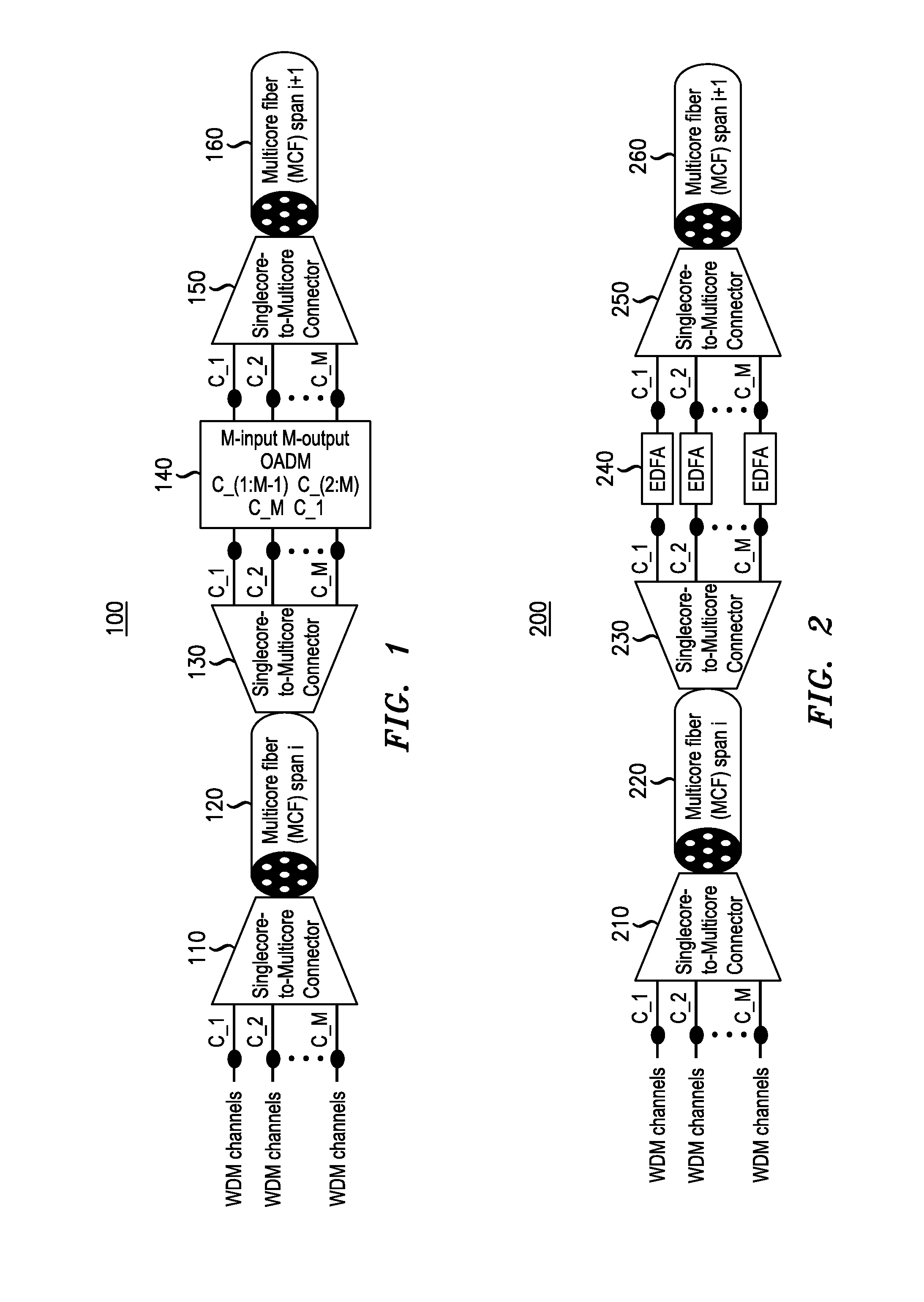Method And Apparatus For Space-Division Multiplexing Systems
a multi-mode, space-division technology, applied in multiplex communication, instruments, cladded optical fibres, etc., can solve the problems of affecting the transmission performance of systems, affecting the overall system performance, and affecting the transmission performance of high-order modes. the effect of uniform loss, increased crosstalk, and improved overall system performan
- Summary
- Abstract
- Description
- Claims
- Application Information
AI Technical Summary
Benefits of technology
Problems solved by technology
Method used
Image
Examples
Embodiment Construction
[0013]FIG. 1 shows a block diagram of a first embodiment of a space division multiplexed (SDM) transmission system according to an embodiment of the invention.
[0014]FIG. 1 illustrates a first embodiment for core-to-core signal rotation in multi-core fiber (MCF) transmission for a SDM transmission system 100. The optical signals traveling through a MCF span are rearranged such that they travel through the next MCF span on different cores of the MCF. As shown, wavelength-division multiplexed (WDM) channels (C—1, C—2, . . . C_M) may be provided to a singlecore-to-multicore-connector 110 for connection to a first MCF span 120. (A fiber span may also be called a fiber segment.) The channels are provided to the first MFC span with a first spatial assignment. Naturally, the optical signal or channels need not utilize wavelength-division multiplexing.
[0015]The MCF span 120 is traversed by the optical signals and provided to a singlecore-to-multicore-connector 130. At this point, the spatial...
PUM
 Login to View More
Login to View More Abstract
Description
Claims
Application Information
 Login to View More
Login to View More - R&D
- Intellectual Property
- Life Sciences
- Materials
- Tech Scout
- Unparalleled Data Quality
- Higher Quality Content
- 60% Fewer Hallucinations
Browse by: Latest US Patents, China's latest patents, Technical Efficacy Thesaurus, Application Domain, Technology Topic, Popular Technical Reports.
© 2025 PatSnap. All rights reserved.Legal|Privacy policy|Modern Slavery Act Transparency Statement|Sitemap|About US| Contact US: help@patsnap.com


